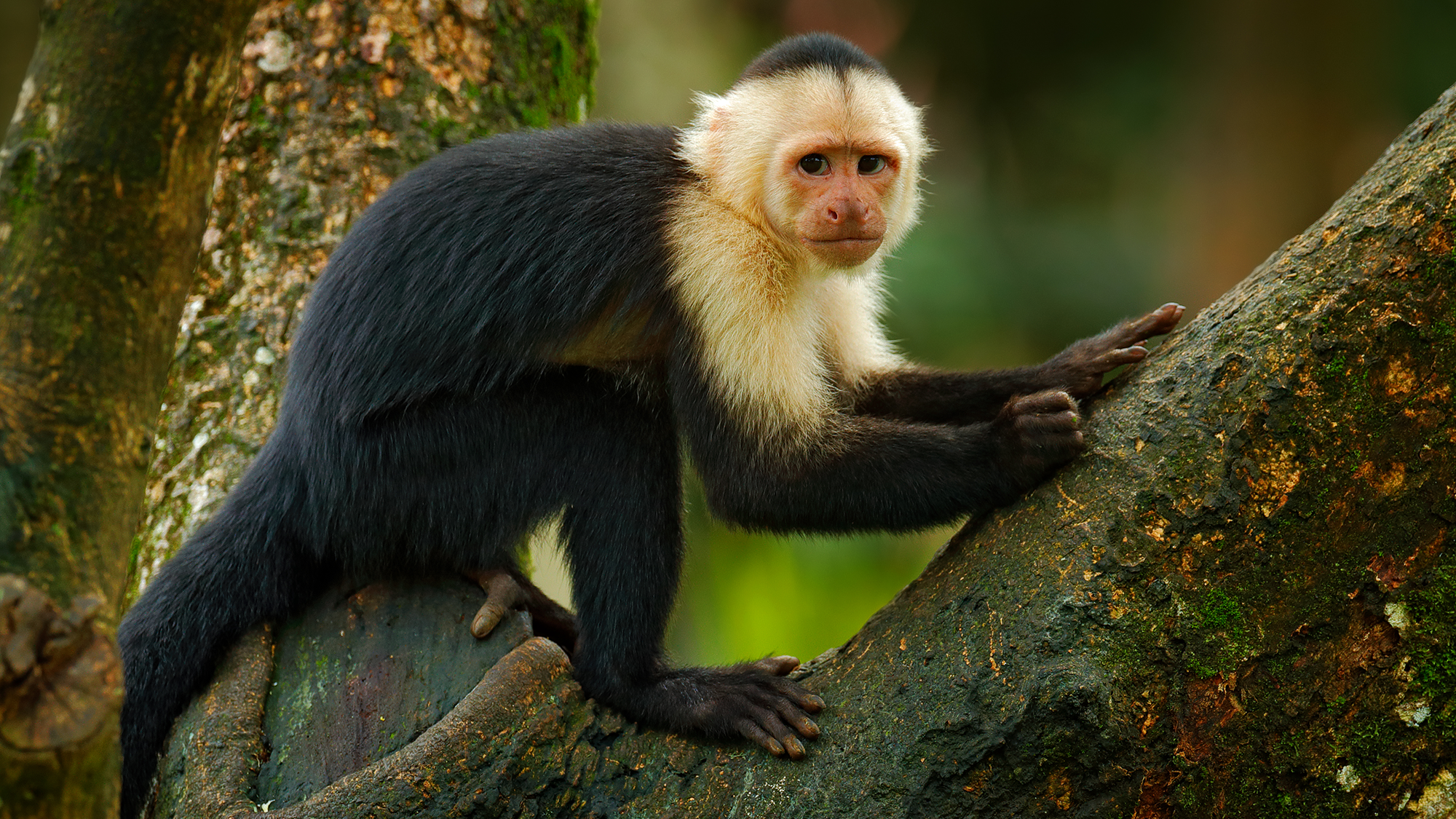

Similar anatomy, not a shared sense of humor, might be key for experiencing deception from a pretty common magic trick. In a new study, a team of psychologists tested a sleight-of-hand trick called the French drop on three species of monkeys with different hand structures. In this trick, an object appears to vanish when a spectator assumes it is taken from one hand by the hidden thumb of the other hand.
The monkeys without opposable thumbs did not fall for the assumption and were aware of the whereabouts of the treats a magician tried to “make disappear.” But, the monkeys with opposable thumbs were duped. The findings were published April 4 in the journal Current Biology.
[Related: A centuries-old magic trick is helping us make holograms we can feel.]
From the results, it appears that in order to deceive, a conjuror needs a similar anatomy to their audience. Sharing a particular biomechanical ability may be necessary to accurately anticipate and predict the movements of another with the same limbs. This phenomenon turns out to be true even when the apparently accurate predictions end in confusion at the hands of an illusionist.
“Magicians use intricate techniques to mislead the observer into experiencing the impossible. It is a great way to study blind spots in attention and perception,” study author Elias Garcia-Pelegrin said in a statement. “By investigating how species of primates experience magic, we can understand more about the evolutionary roots of cognitive shortcomings that leave us exposed to the cunning of magicians.”
Garcia-Pelegrin, now a psychology professor at the National University of Singapore, has practiced magic for a decade and conducted these experiments during his PhD work at Cambridge University.
The French drop is often one of the first tricks budding magicians set out to master. In the trick, a coin is displayed in one hand. The other hand then reaches over and grabs the coin. The palm of the second hand faces inwards, with the magician’s thumb concealed behind fingers. The viewer knows the thumb is lurking and ready to grip, so they assume the coin has been taken when it is no longer visible. Their attention then follows the second hand, only to find it empty. Meanwhile, the magician had secretly dropped the coin into the palm of the original hand.
In this study with monkeys, morsels of food replaced coins and the treats were given as a reward– but only if the monkey guessed the correct hand. Going into the experiment, the team predicted that monkeys with opposable thumbs would act like human audiences and assume that the hidden thumb had grabbed the treat, and then select the incorrect hand.
[Related: Time passes faster for smaller, quicker animals.]
The team repeatedly performed the French drop for 24 monkeys from three species– capuchins, squirrel monkeys, and marmosets.
The eight capuchin monkeys were tested using peanuts. This species boasts noteable dexterity and uses stone tools to crack open nuts in the wild. Capuchins can also waggle each finger and have opposable thumbs which allow “precision grip” between thumb and forefingers. They were fooled by the French drop about 81 percent of the time, mostly choosing the empty second hand.
While less dexterous than their capuchin counterparts, squirrel monkeys have limited thumb rotation, but can oppose their thumbs. They are typically familiar with a hidden thumb interacting with fingers, but they cannot cannot perform a precision grip the way capuchins and humans do. The squirrel monkeys were tested with mealworms and were fooled 93 percent of the time.
Marmosets do not have opposable thumbs and have thumbs that align with their fingers to make five equidistant digits. These are ideal for climbing up thick tree trunks. They were fooled only 6 percent of the time. They chose the hand that initially held a tasty marshmallow was initially placed and stuck with it for this experiment.

The team tried to nullify the tricks by actually completing the hand-to-hand transfers, instead of using misdirection. When this occurred, the capuchins and squirrel monkeys anticipated correctly, while the marmosets missed out on their reward.
As a last step, the team devised their own version of the French drop called the “Power drop”. It utilizes a full fist grab, which is a hand action that all the monkey species could perform to varying degrees. They found that the power drop fooled all of the monkey species the vast majority of the time.
[Related: Monkeys with close friends have friendlier gut bacteria.]
“There is increasing evidence that the same parts of the nervous system used when we perform an action are also activated when we watch that action performed by others,” co-author and Cambridge psychologist Nicola Clayton said in a statement. “This mirroring in our neural motor system might explain why the French drop worked for the capuchins and squirrel monkeys but not for marmosets.”
The team adds that how fingers and thumbs move helps space the way an individual thinks and the assumptions made about the world around us.
“Our work raises the intriguing possibility that an individual’s inherent physical capability heavily influences their perception, their memory of what they think they saw, and their ability to predict manual movements of those around them,” said Clayton.